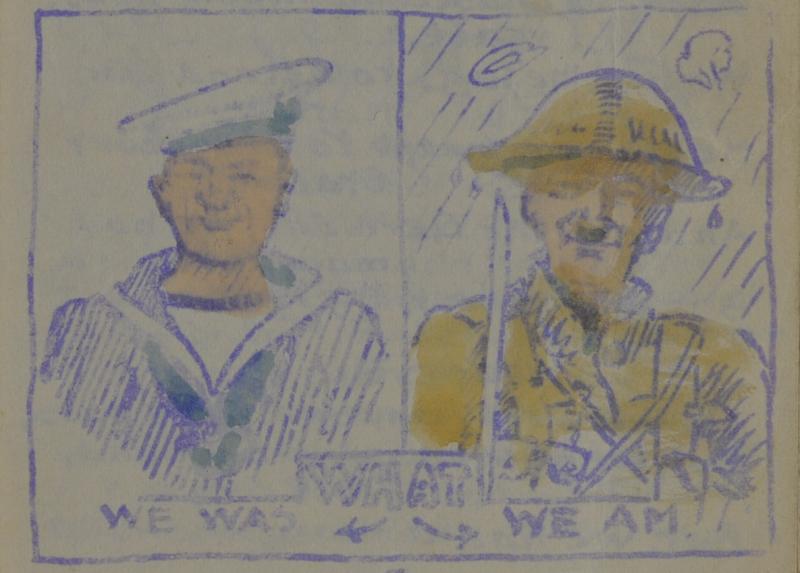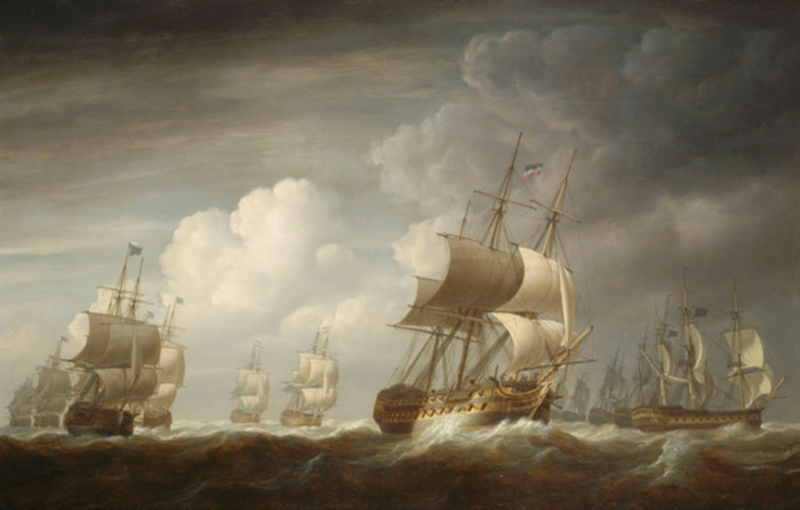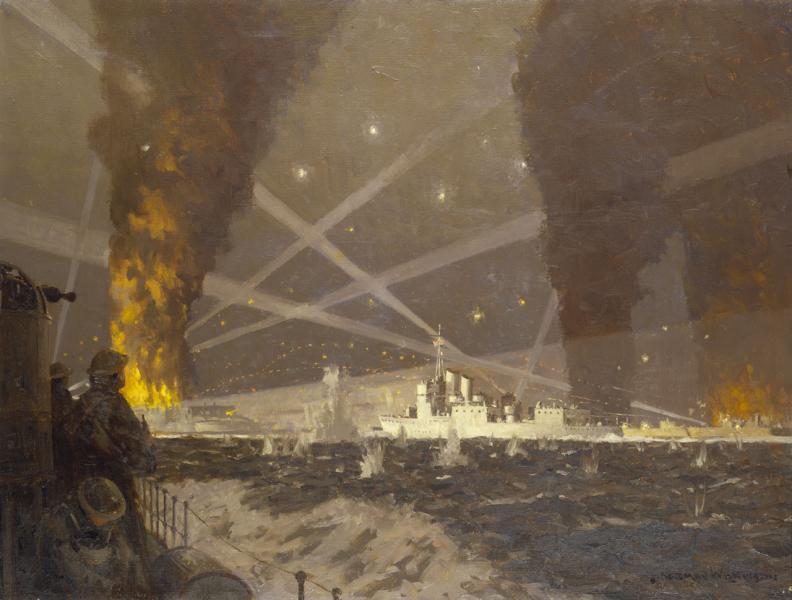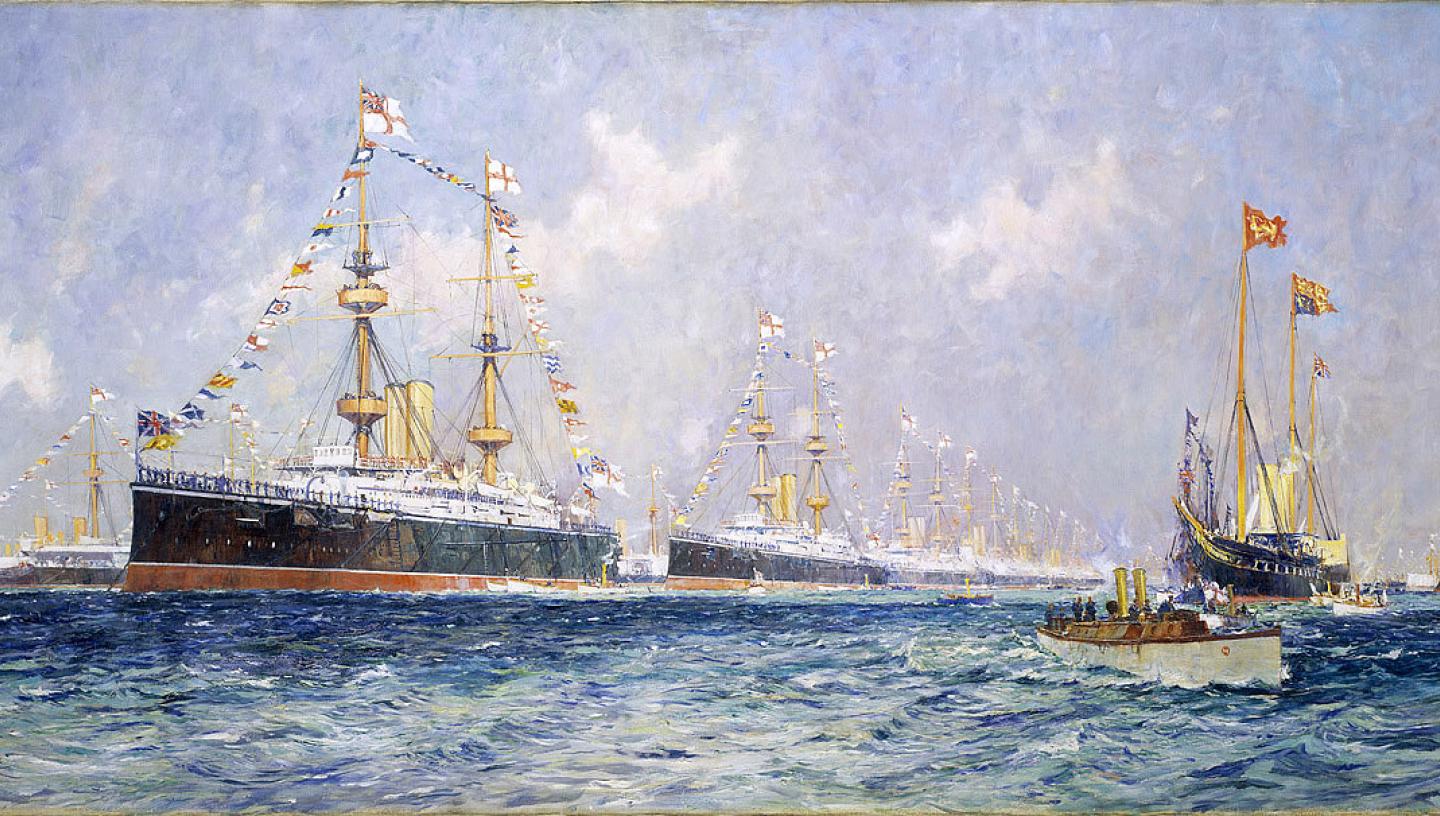
Material from the printed and manuscript collections of the Caird Library and Archive offers a window to the grand naval spectacles of the past
A fleet (or naval) review involves gathering many ships – traditionally in the Solent off Spithead – to be formally inspected by the sovereign, their representative, and/or assembled dignitaries. Though a rare sight in recent decades, reviews have regularly marked significant occasions since the first was held 700 years ago.
Reviews performed political, diplomatic, ceremonial, and military functions. A ‘show of strength’, publicly demonstrating sea power and technical innovation, can impress allies, warn potential foes, reassure the public, and underline the value of the navy to politicians and decision makers.
Traditionally, reviews were used sparingly, usually to inspect the fleet before or after a major naval engagement. From the eighteenth century, reviews became more frequent and assumed a role in marking great state occasions. The National Maritime Museum, and the Caird Library in particular, has a rich variety of material connected to naval reviews over the last 250 years.
Official birthday review of George III, 1773
To celebrate the official birthday of George III a review was held on 23-27 June 1773 off Portsmouth in the Solent. The first to be held since Peter the Great’s visit 75 years previously, an enormous spectacle was staged involving an array of ships including HMS Barfleur (1768) and HMS Royal Oak (1769). It created the model for subsequent reviews.
Such an event required significant planning. We can get a sense of this from the collection of antiquarian Sir Thomas Phillipps (1792-1872). PHB/P/7/1 and PHB/P/7/2 contain detailed orders from the Commander-in-Chief, Portsmouth, Vice-Admiral Thomas Pye, who was responsible for its organisation.
As one might expect, Pye carefully considered formalities such as gun salutes, and had devised a schedule of the day’s events. This attention to detail even extended to the decorative, with drawings of oar blade decorations for the Admiralty shallop. He was well rewarded for his efforts. George III ordered his advancement to full Admiral and awarded him a knighthood on the deck of HMS Barfleur.
Preparations had not been entirely smooth sailing, however. There was some disgruntlement among the captains taking part. A report of a meeting held on board HMS Ocean records the status-conscious captains’ dissatisfaction at their place in the procession.
Victoria’s Diamond Jubilee fleet review in 1897
By 1897 the Royal Navy had been unrivalled in its size and power for nearly a century. Victoria’s reign saw sixteen reviews in total, the most of any British monarch. A lengthy reign and ships in plentiful supply meant frequent opportunities to demonstrate naval superiority.
Material connected to several of these Victorian reviews can be found within the Museum’s archival and cartographic collections. Admiralty charts (RMG ID: G223:2/63(1-6)) mark the positions of participating warships for the 1897 Diamond Jubilee Reviews at Spithead.
Aside from providing a detailed visual record, the charts convey a sense of the scale of the event. 165 naval ships, including 21 battleships, were reviewed by the Prince of Wales from HMY Victoria and Albert (1855) on behalf of his mother who was too ill to attend personally. Merchant ships and foreign warships also took part.
Further copies can be found in JOH/40/1-4, along with charts for the 1887 Golden Jubilee Review. They are from the collection of Vice-Admiral Charles Johnstone (1843-1927), who commanded HMS Volage (1869) when it participated in the 1887 review.
Writing to Lieutenant (later Admiral) Mark Kerr CB CVO, the Commander-in-Chief of the Forces Field Marshall Viscount Wolseley KP GCB OM GCMG VD PC offers a soldier’s thoughts on the review in AGC/16/37:
I disliked the Naval Review today. I know as little of ships… as any civilian… and the present Battleships in such a hideous contrivance that it would have been no enjoyment to me to have been amongst the spectators. But the Review will do good in showing our enemies what a navy we have at home without drawing from our distant stations.
Coronation Fleet Review of George V, 1911
The journals of Rear-Admiral Frederick Arthur Buckley CB (1887-1952) offer a personal view. In BUC/2/3, whilst serving as a Lieutenant on dreadnought HMS St Vincent (1908), Buckley records his experiences of Review Day (Saturday 24 June, 1911). The day provides an opportunity for friends and family to gather and enjoy the spectacle. Yet, between the buzz of activity, there didn’t seem to be a lot for the ordinary sailor to do. He writes:
Very dull early morning. Landed after breakfast and saw first steamer leave then went to the station to meet guests coming down by Specials from Town… Met mates and Mona at Station and lots of people I know… Had a somewhat “catch as catch can” lunch and then we manned ship. The Royal Yacht came out of Harbour at 2pm. Most of the sailors I think were very bored, the only place free from the crowd was the Turret! King passed us about 3:45. Had tea after the [Royal Yacht] had anchored. Most of guests left… at 6:30pm… Saw Mother and Mona off. I got ashore at 8:30 [and] saw the illuminations from the roof of the Carlton Hotel
Elizabeth II Silver Jubilee Review, 1977
The personal papers of Admiral of the Fleet Lord Lewin of Greenwich KG GCB LVO DSC (1920-1999) offer historians an insight into an important figure of the postwar Navy. Part of this collection includes LWN/1/24, which contains documents relating to the 1977 Silver Jubilee Fleet Review. Lewin was First Sea Lord and Chief of the Naval Staff at the time.
Enclosed in Admiral Lord Lewin’s papers are various collected ephemera from the two-day event including invitations, boarding passes, and menus. Seating plans for meals on board HMY Britannia (1953) provide some behind-the-scenes details, along with some photographs of the event from the royal yacht. There is also information on HMS Birmingham (1973) which ferried the Admiralty Board, Defence Council, and their spouses (including Lady Lewin) for the review.
As the postwar geo-political landscape shifted and government spending priorities changed, Elizabeth II’s reign saw a marked decline in the number of commissioned ships in service. Consequently, fleet reviews became infrequent occurrences compared with their heyday of the late nineteenth and early twentieth centuries.
These events have left behind a unique record, offering researchers private and public perspectives on this long-standing naval tradition. The items featured here are just a small insight. Naval review-related publications have a strong presence in our pamphlet collection, for example. You can investigate our collections online at https://www.rmg.co.uk/collections
Further reading
Dunn, Steve R. The Power and the Glory: Royal Navy Fleet Reviews from Earliest Times to 2005. Seaforth, 2021. PBK0175.
Ransome-Wallis, P. The Royal Naval Reviews 1935-1977. Ian Allen, 1982. PBN7488.
Indian and Eastern Engineer. Key plan, showing the disposition of the ships of HM fleet, assembled at Spithead on the occasion of the Diamond Jubilee Review, 26th June 1897. PBB9798.
Official Programme of the Coronation Review, Spithead, June 24th 1911. Gale & Polden, 1911. PBB9855.
Royal Navy. Silver Jubilee Review of the Fleet by Her Majesty the Queen: Spithead, 28 June 1977. Ministry of Defence, 1977. PBB9845.
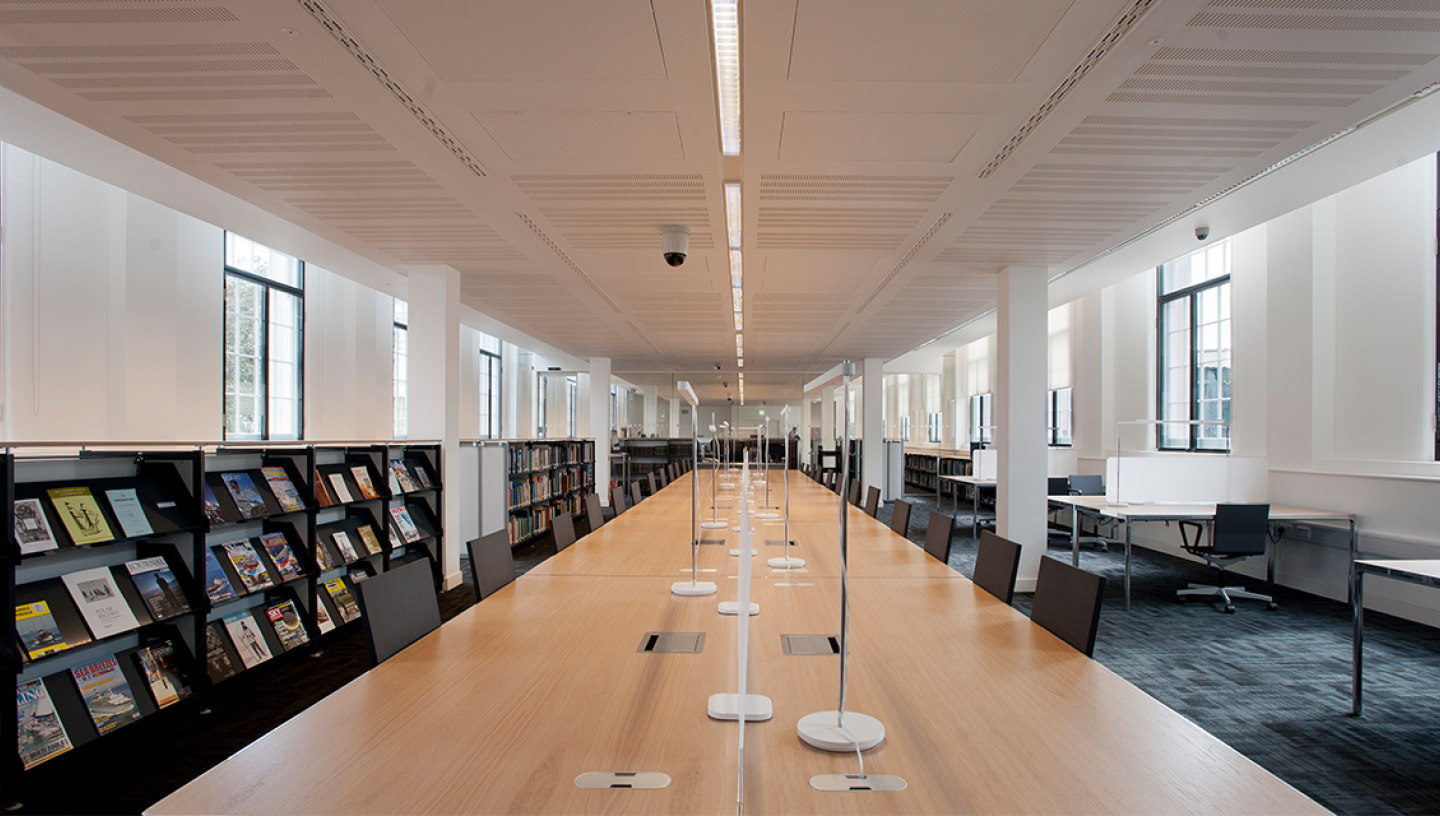
The Caird Library and Archive
Header image: 'In Honour of our Queen': Queen Victoria's Diamond Jubilee Review at Spithead, 26 June 1897 by Charles Edward Dixon, 1898 (RMG ID: BHC0645).





